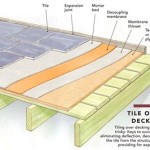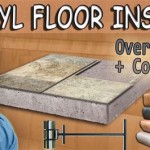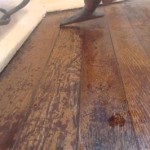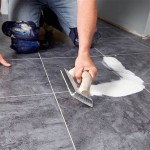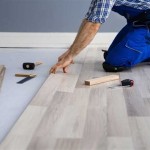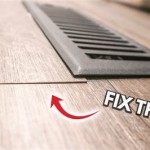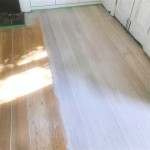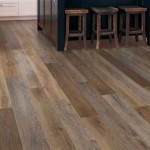Does Carpet Tape Damage Wood Floors? Understanding the Risks and Alternatives
Carpet tape is a common adhesive product designed to secure carpets and rugs to various floor surfaces. Its appeal lies in its ease of use and relatively low cost. However, when used on wood floors, the potential for damage becomes a significant concern. Understanding the properties of carpet tape and its interaction with wood flooring is crucial for making informed decisions about floor protection and rug placement.
Understanding the Components of Carpet Tape
Carpet tape typically consists of a carrier substrate, often a fabric or plastic film, coated on both sides with an adhesive. The adhesives used can vary, ranging from rubber-based compounds to acrylic-based formulations. The strength and tackiness of the adhesive are primary factors in determining its effectiveness in holding the carpet in place. However, these same properties also contribute to the potential for damage when the tape is removed from a wood floor.
The carrier substrate provides structural support for the adhesive layers and helps to distribute the stress when the tape is applied or removed. The substrate's composition can also influence the tape's compatibility with different floor surfaces. Some substrates may be more likely to leave residue or cause discoloration compared to others.
The adhesive itself is the most critical component concerning potential damage to wood floors. The strength of the adhesive bond, its chemical composition, and its long-term stability all play a role in how it interacts with the wood's surface. Strong adhesives can pull away the finish or even damage the wood fibers themselves upon removal. Some adhesives may also contain solvents or chemicals that can react with the wood finish, leading to discoloration or softening of the protective coating.
How Carpet Tape Can Damage Wood Floors
The potential for carpet tape to damage wood floors stems from several factors, including the adhesive's strength, the type of wood finish, and the duration of application. The damage can manifest in various ways, ranging from minor residue to significant finish removal or even structural damage to the wood itself.
One of the most common issues is adhesive residue. Over time, the adhesive can dry out and become brittle, leaving a sticky or gummy residue on the floor. This residue can be difficult to remove, requiring specialized solvents or cleaning techniques. In some cases, the residue can permanently stain or discolor the wood floor.
Another significant concern is the removal of the wood finish. When removing carpet tape, the strong adhesive bond can pull away the protective finish layers of the wood flooring. This can leave the wood exposed and vulnerable to scratches, stains, and moisture damage. The severity of the finish removal depends on the type of finish used, the strength of the adhesive, and the technique used for tape removal.
In more severe cases, carpet tape can even damage the wood fibers themselves. This is more likely to occur with softwoods or floors with a thin veneer. The strong adhesive can tear or lift the wood fibers, leaving a rough or uneven surface. Such damage may require professional repair or even replacement of the affected flooring sections.
The duration of application also plays a crucial role in the extent of potential damage. The longer the tape remains on the floor, the more likely it is that the adhesive will bond strongly to the finish and leave residue. Prolonged exposure to sunlight or heat can also accelerate the degradation of the adhesive, making it even more difficult to remove.
Factors Influencing the Severity of Damage
The extent of damage caused by carpet tape on wood floors is influenced by a combination of factors, including the type of wood flooring, the type of carpet tape used, the environmental conditions, and the method of removal. Understanding these factors can help mitigate the risk of damage and inform the selection of alternative floor protection solutions.
The type of wood flooring is a primary determinant of its susceptibility to damage. Hardwoods like oak, maple, and cherry are generally more resistant to scratches and finish removal compared to softwoods like pine or fir. Floors with a thicker protective finish are also better equipped to withstand the adhesive bond of carpet tape. Engineered wood floors, which consist of a thin veneer of hardwood over a plywood core, can be particularly vulnerable to damage if the veneer is thin or poorly bonded.
The type of carpet tape also plays a significant role. Tapes with aggressive adhesives are more likely to cause damage compared to those with weaker adhesives. Double-sided tapes designed specifically for use on delicate surfaces, such as wood or laminate flooring, may be a better option. However, it is still essential to test these tapes in an inconspicuous area before applying them to the entire floor.
Environmental conditions can also influence the adhesion and removal of carpet tape. High humidity can weaken the adhesive bond, making the tape easier to remove. Conversely, dry conditions can cause the adhesive to dry out and become brittle, increasing the likelihood of residue and finish removal. Exposure to sunlight or heat can also accelerate the degradation of the adhesive.
The method of tape removal is also a critical factor. Ripping the tape off quickly can cause significant damage to the finish. A slower, more deliberate approach, combined with the use of heat or solvents to soften the adhesive, can help minimize the risk of damage. It is essential to follow the manufacturer's instructions for tape removal and to test any solvents or cleaning products in an inconspicuous area before applying them to the entire floor.
Alternatives to Carpet Tape for Wood Floors
Given the potential for damage, several alternative methods can be used to secure carpets and rugs to wood floors without risking the integrity of the flooring. These alternatives range from non-adhesive rug pads to specialized fastening systems designed for delicate surfaces.
Rug pads are a common and effective alternative to carpet tape. They provide a layer of cushioning between the rug and the floor, preventing slippage and protecting the floor from scratches and wear. Rug pads are available in various materials, including felt, rubber, and synthetic fibers. Non-slip rug pads, specifically designed for wood floors, are often made of natural rubber or synthetic polymers that provide excellent grip without leaving residue or damaging the finish.
Another option is to use furniture to anchor the rug in place. Placing heavy furniture, such as sofas, chairs, or tables, strategically around the perimeter of the rug can help prevent it from shifting or bunching up. This method is particularly effective for larger rugs that are partially covered by furniture.
Specialized fastening systems, such as rug anchors or rug grippers, provide another alternative to carpet tape. These products typically consist of small, adhesive-backed discs or strips that attach to the underside of the rug and grip the floor surface. Some rug grippers are designed to be reusable and can be easily repositioned without leaving residue. It is essential to choose rug grippers that are specifically designed for use on wood floors to minimize the risk of damage.
For area rugs that are prone to slipping, consider using a nonslip rug underlay. These underlays are designed to be placed directly under the rug and provide a secure grip on the floor. Nonslip rug underlays are available in various materials and sizes to fit different types of rugs and floor surfaces. It is essential to choose an underlay that is compatible with the type of wood flooring to prevent any adverse reactions or damage.
Another approach is to use a combination of methods, such as rug pads and furniture placement, to secure the rug to the floor. This can provide a more comprehensive solution for preventing slippage and protecting the wood flooring.
Safe Removal Techniques for Carpet Tape
If carpet tape has already been applied to a wood floor, it is crucial to use safe removal techniques to minimize the risk of damage. The goal is to soften the adhesive bond without damaging the finish or the wood itself. Several methods can be used, including heat application, solvent use, and careful scraping.
Heat application can help soften the adhesive, making it easier to peel off the tape without pulling away the finish. A hairdryer or heat gun can be used to gently warm the tape. It is essential to use a low heat setting and to avoid overheating the tape, as this can damage the finish. Apply heat evenly to the tape for a few seconds, then try to peel it off slowly and carefully. If the tape is still difficult to remove, repeat the heating process.
Solvents can also be used to dissolve the adhesive. Mineral spirits, adhesive removers, or even vinegar can be effective in softening the adhesive. However, it is essential to test the solvent in an inconspicuous area before applying it to the entire tape, as some solvents can damage the finish. Apply the solvent to the tape using a clean cloth or cotton ball, and let it sit for a few minutes to allow the adhesive to soften. Then, try to peel off the tape slowly and carefully. If the adhesive is still stubborn, repeat the solvent application.
Careful scraping can be used to remove any remaining adhesive residue. Use a plastic scraper or putty knife to gently scrape away the residue. Avoid using metal scrapers, as they can scratch the finish. Apply gentle pressure and work in small sections, being careful not to damage the wood. If the residue is difficult to remove, try applying more heat or solvent to soften it further.
Once the tape and residue have been removed, clean the area with a mild soap and water solution to remove any remaining solvent or cleaning products. Dry the area thoroughly with a clean cloth. Inspect the floor for any signs of damage, such as scratches, discoloration, or finish removal. If damage is present, consult a professional floor refinisher for repair options.

Pros And Cons Of Applying Rug Tape On Your Floors Carpets Rugpadusa

Is It Safe To Use Painter S Tape On Hardwood Floors

Will Double Sided Carpet Tape Damage My Hardwood Floor Tile By All Flooring Now

How To Remove Double Sided Carpet Tape On Linoleum Kitchen Floor Hometalk

How To Remove Carpet Tape From A Wood Floor Without Damage

Will Double Sided Carpet Tile Tape Leave A Sticky Residue Or Damage My Floor

Is It Safe To Use Painter S Tape On Hardwood Floors

Types Features And Specific Uses Of Carpet Tape

Painters Tape Will Pull Hardwood Polyurethane Finish

Types Features And Specific Uses Of Carpet Tape
See Also
